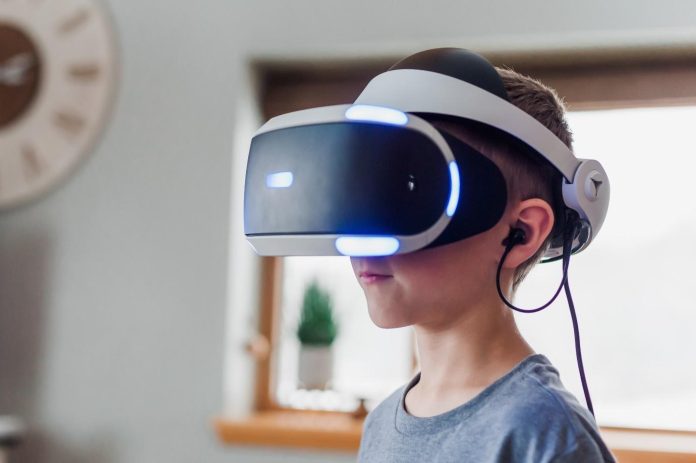Virtual reality gaming is all the rage. Everyone is excited to try the video gaming experience that creates its own simulated environment.
In VR gaming, players wear special headsets that immerse them in a three-dimensional, computer-generated world. These headsets include motion-tracking sensors and have built-in audio systems to create a total experience of being in another world.
Whether your gaming experience is an evening immersed in an multi-player role-playing fantasy game or a fun session at BonusFinder New Zealand, VR sounds amazing, like sci-fi come to life. So it’s little wonder that VR is already one of gaming’s hottest growth areas.
And that’s why sales of popular virtual gaming platforms have soared in recent years. They now include devices like Meta Quest 3, Oculus Rift, HTC Vive XR and PlayStation VR.
The hype is thrilling – but VR gaming is not for everyone. There are plenty of Pros – and plenty of Cons.
Here’s our expert lowdown on VR’s best and worst points:
Advantages of VR gaming
VR gaming is one of the most engrossing forms of entertainment ever devised. Here are some reasons why:
VR provides a high level of immersion by placing players directly into a game’s three-dimensional virtual environment. This feeling of being actually ‘there’ boosts the feeling of the thrills, laughs and wow factor.
- Realistic Interaction
The technology boosts a player’s natural interaction with the game’s virtual world. Players can interact with the game’s objects, characters and navigate its environment, as if it is a real lifelike experience.
- Spatial Awareness
VR provides players with an enhanced sense of spatial awareness. They can perceive depth and distance in the virtual world of a game in a way that’s impossible on a normal flat screen.
This can make game experiences like exploration, puzzle-solving, and combat seem much more realistic. This is helping fuel the success of visually stimulating games like Half-Life: Alyx and Skyrim VR.
- Innovative Gameplay
VR has opened up new possibilities for developers to create innovative gameplay that is now being designed to offer unique experiences way beyond traditional gaming.
- Social Interaction
Multiplayer VR games enable players to interact in a more natural way. Players may be physically located in different places – but VR allows interactions as if they are in the same room.
- Health and Fitness
Some VR games incorporate physical activity promoting a more active gaming experience. Games like Beat Saber, for example, combine rhythmic movement with exercise.
- Therapeutic Applications
VR has been explored for potential therapeutic applications, like pain management and anxiety treatment.
- Educational Value
VR can be used as an effective educational tool, thanks to its immersive learning experiences. Users can simulate historical events or scientific phenomena for a memorable learning experience.
Disadvantages of VR gaming

Less hyped in the review sites are the difficulties and problems associated with VR gaming. Here are some of the worst:
- Cost
High-quality VR hardware, including headsets and motion controllers, is expensive. In times of tight budgets, premium VR systems are beyond the reach of many players.
- Motion Sickness
Check before you buy – because it turns out some players find that VR games make them seasick. It can certainly feel a bit weird for anyone wearing a VR headset, particularly during rapid movements.
- Space Requirements
Some VR games, especially those involving lots of physical movement, need a lot of physical space. Not everyone has access to a large gaming area.
- Isolation
The captive immersive nature of VR can lead to isolation from the real world. This may not be suitable for all players – especially those who prefer social gaming.
- Health and Safety
Prolonged use of VR may cause eyestrain. Also users may become so unaware of physical surroundings they risk crashing into real-world objects in their gaming room.
- Content Availability
Today’s library of VR games is growing fast but it is still relatively small compared to traditional platforms. High-quality VR content takes time to produce.
- Learning Curve
Many players find it more challenging to adapt to the controls of VR.
- Hardware Limitations
VR hardware is continually improving but there are still limitations like screen resolution and field of view. The visual quality of traditional gaming is still better.
- Dependency on Accessories
Many VR systems require additional accessories and sensors for optimal performance. Setting up and calibrating these can be expensive, time-consuming and downright fiddly.
- Limited Portability
There are portable VR options, but high-end VR systems require a connection to a powerful gaming PC or console, limiting their portability.
As VR technology advances, these disadvantages may be addressed by the manufacturers. And many users are already adopting VR without any of the problems listed above.
The future is definitely that VR is likely to become one of the most popular and entertaining options for players of all budgets and genres.

